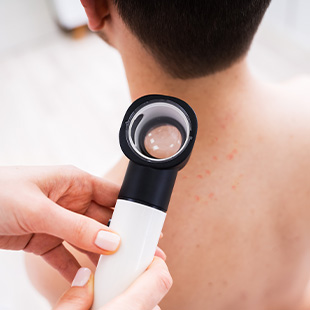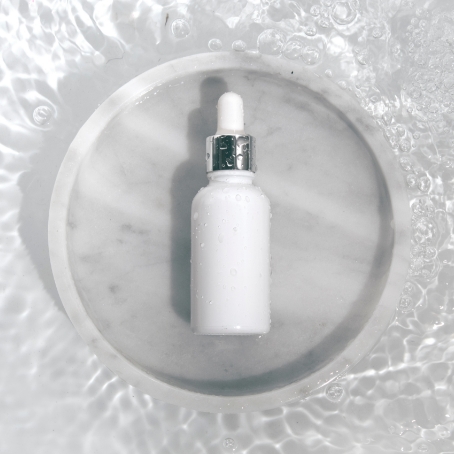On this page


What are Actinic Keratoses?
Actinic keratoses are rough, scaly bumps that appear in sun-exposed areas like the scalp, face, chest, arms, hands, and legs. They result from chronic sun exposure. Sun damage that causes actinic keratosis can accumulate from constant exposure while outside and even more so from the use of tanning beds. Actinic keratoses are not necessarily cancerous but they can develop into certain types of skin cancer. For this reason, it’s important to have them promptly treated by a certified dermatology provider.
What Are the Symptoms of Actinic Keratosis?
Typically, actinic keratoses are very small and may appear red, brown or pink. They are most often flat but may feel rough or scaly in texture. In some cases, they may itch, even crusting or bleeding when you scratch them – they can also feel raw, burning, or painful.
What Causes Actinic Keratoses?
Actinic keratoses develop from prolonged sun exposure. Over both short and long periods, UV rays can damage the skin, causing it to grow and change in different ways. For this reason, actinic keratoses typically form on areas that are often exposed to the sun on a day-to-day basis.
REAL PATIENT RESULTS
Visit our gallery to see the Biltmore Difference. We pride ourselves on consistently great results and it is our happy patients who are a true testament to our work.
VIEW BEFORE AND AFTER PHOTOS
Actinic Keratosis Treatment Options
There are many effective treatments for removing actinic keratoses. Common treatments for actinic keratoses include photodynamic therapy (PDT), liquid nitrogen (cryotherapy), or topical medications such as Efudex (Fluoroplex), or Klisyri. These treatments are essential in preventing actinic keratoses from developing into a serious form of cancer such as squamous cell carcinoma. Our certified dermatology provider can help you select the right treatment option for your skin during an appointment.

WALK-IN APPOINTMENTS
If you have an immediate concern, you want to find quality care as soon as possible. Our office takes walk-in appointments and will be happy to address your concerns and offer you immediate treatment suggestions and medical care.
LEARN MOREManaging Actinic Keratoses
It’s important to note that actinic keratoses can return if you don’t take steps to prevent sun damage. The single most effective way to prevent actinic keratoses and skin cancer is by wearing daily sunscreen (SPF 30+) and wearing sun-protective clothing on areas commonly exposed to UV rays. Additionally, if you use tanning beds, stop immediately. Finally, make sure to follow up with our team regularly to assess your actinic keratoses and discuss strategies in which to help ensure your skin remains healthy.
Schedule a Consultation
Actinic keratoses require professional treatment in order to keep your skin clear of any risks. To meet with our team, call our Terre Haute, IN office, fill out our online contact form, or “Walk In Now.”
Frequently Asked Questions
What is the best treatment for actinic keratoses?
Do actinic keratosis need to be removed?

RYAN T. PATTERSON FOUNDER/CEO, DCNP
Ryan is State Licensed and Nationally Board Certified as a Family Nurse Practitioner (NP-C) by the American Academy of Nurse Practitioners. Additionally, he is board certified as a Dermatology Certified Nurse Practitioner (DCNP) by the Dermatology Nursing Certification Board. He has 23+ years of Dermatology Experience.
Meet The TeamTestimonials
Testimonials

SHOP SKINCARE PRODUCTS
We rely on medical-grade skincare products with quality ingredients clinically proven to restore and maintain skin health. Find your perfect products and develop a customized skincare routine designed to your skin type and skin concerns.






